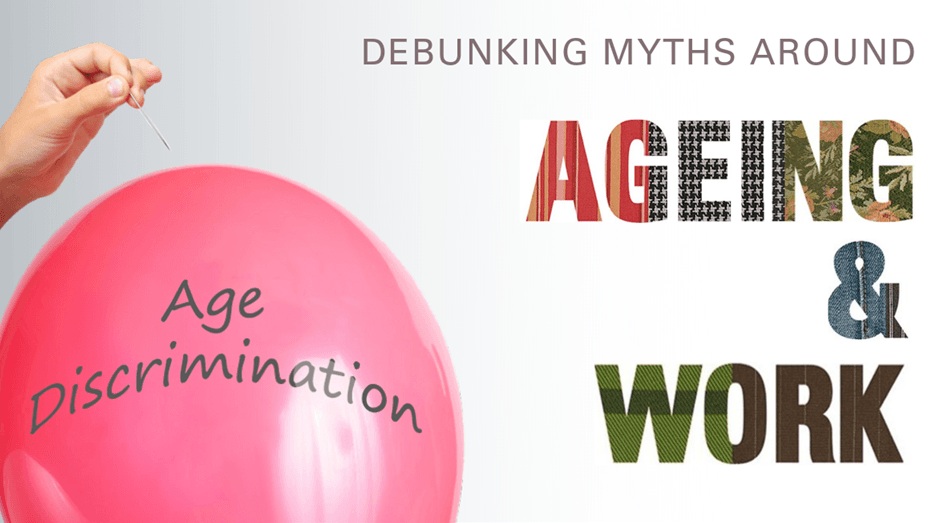The Australian population is ageing. This has led to a lot of public policy and debate around the need to reduce welfare costs and respond to projected shortfalls in labour as older workers retire in large numbers.
Prolonging the working life in an inclusive way, and promoting solidarity of different employee life stages, are key issues in the workplace.
To help [organisations] with this, Professor Philip Taylor from Federation University Australia and DCA are tackling some misconceptions around age and work.
Myth #1: Age discrimination towards older workers is endemic
Reality: Age discrimination is potentially faced by all workers
While it is often characterised as a problem solely experienced by older people, in fact, young people experience age discrimination too. Age discrimination manifests in many forms – a lack of employment, under-employment, during recruitment, lack of career opportunities, and stereotyping.
Myth #2: Different generations have different orientations to work
Reality: It is employee life stage (e.g. school leaver, working parent, graduating to retirement) that makes a big difference – not generation
Generational constructs such as ‘Millennial’ or ‘Boomer’ are caricatures which provide a poor basis for making employment decisions. Instead, providing age inclusion over the entire employee lifecycle is key – from school leavers looking for their first work experience, to people seeking return to work after raising children, through to older workers wanting to transition to retirement.
Myth #3: Older people are a homogenous group
Reality: Older and younger people have intersectional parts of their identity which impacts on how they experience inclusion at work
People aren’t one-dimensional. Whether people are older or younger, it is how the multiple aspects of their identity intersect that impacts on how they experience inclusion at work.
Myth #4: Older workers outperform younger ones in terms of their reliability, loyalty, work ethic and life experience
Reality: Performance is not linked to age – except in very rare instances
These are age stereotypes. A better starting point for managers would be to not assume correlation between age and performance. Age-based decision-making is not only discriminatory, it also has no competitive advantage.
Myth #5: Older people have a lifetime of experience that managers should recognise
Reality: Relevant experience, is more valuable than experience, of itself
Life experience may sometimes be valued for a given role, but not always. It is better to consider what relevant experience people have and what, if any, gaps may need to be filled.
Myth #6: Younger workers are more dynamic, entrepreneurial, and tech savvy than older workers
Reality: Older people have a lot to offer the modern workplace
It should not be assumed that people have a given quality just because they are older or younger. Workplace policies should instead be built on a foundation of age neutrality.
Myth #7: Younger workers feel entitled and won’t stick around
Reality: Younger workers are more likely to be in insecure employment and to experience unemployment
Research shows that there is little link between age and someone’s commitment to work. This is just another example of an unfounded ageist stereotype.
Myth #8: Older people who stay on at work are taking jobs from younger people
Reality: Increasing the employment of older workers does not harm, and may even benefit, younger people’s employment prospects
Actually, research demonstrates that, across the OECD countries, increases in rates of older people’s employment are associated with higher youth employment rates or demonstrate no relationship at all. While young and old are sometimes characterised as being in conflict, the reality is that we are all in this together.
This article was written by Professor Philip Taylor. DCA members can read the full myth-buster on the Diversity Council Australia website.
Diversity Council Australia (DCA) is the independent not-for-profit peak body leading diversity and inclusion in the workplace. DCA provides unique research, inspiring events and programs, curated resources and expert advice across all diversity dimensions to a community of member organisations.

